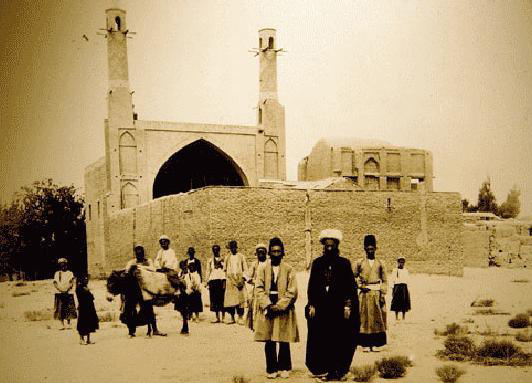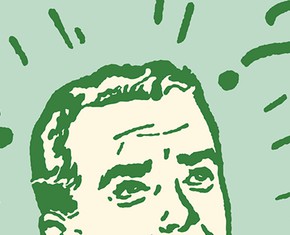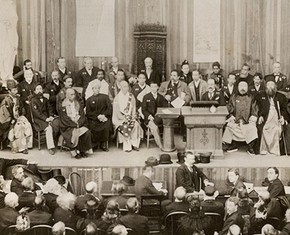The views expressed in our content reflect individual perspectives and do not represent the authoritative views of the Baha'i Faith.
…the children of Israel have forsaken thy covenant, thrown down thine altars, and slain thy prophets with the sword; and I, even I only, am left; and they seek my life, to take it away. – Elijah, 1st Kings 19:10.
Prophets, as we all know, often have short lifespans. Christ died on the cross at 33, after teaching his new Faith for only three years. For some reason that we poorly understand, the leaders of humanity often react badly to the founders of the world’s great Faiths, and persecute them terribly. Abraham and Moses faced prison, exile, ridicule and persecution. Krishna and Buddha suffered derision and official censure. Society’s leaders crucified Christ; made war on Muhammad; tortured, exiled and imprisoned Baha’u’llah; and executed The Bab.
Have you heard about The Bab? If not, you might want to know about his message, and about what happened to this young prophet, who started a progressive new Faith in the midst of one of the world’s most corrupt and backwards societies. He suffered enormously as a result, but even after his gruesome death the Babi Faith paved the way for the global emergence of the Baha’i Faith, just as John the Baptist did for Jesus’s new Faith.
His story began less than two centuries ago. The Bab (which means Gate in Arabic, and is pronounced bŏb) began his new Faith in 1844. It emerged out of the prophetic Sufi mysticism prevalent in 19th Century Persia. The Bab’s stirring message—that his teachings heralded the future appearance of a great, worldwide revelation—rapidly caught fire in that very tradition-bound Shi’a Muslim culture. At first just a few people learned about the Bab, but then thousands and tens of thousands began to become Babis, breaking away from their society’s Islamic traditions and practices and challenging the authority of its leaders. The rapid growth of the Babi Faith challenged the underpinnings of Persian society.
Persia’s clerics and rulers did not react kindly to this new religious development, to say the least.

Isfahan, Qajar Era circa 1900
Just six years after the Bab’s announcement of his new Faith in 1844, the Qajar government ordered the execution of this young, intensely charismatic messenger—who was only thirty years old at the time. The government and the Islamic clerics had already gruesomely tortured and killed more than 20,000 of the Bab’s ardent followers during the short, intense six-year duration of the Babi movement. Because the Bab called for revolutionary changes to the prevailing system of religious belief and governance, and because he taught the unity of all religions, the authorities feared that this dynamic new challenge and its growing support would soon sweep them from power.
Despite wholesale genocide against its followers, more and more people continued to become Babis. In 1850, frightened of its growing influence and desperate to crush the Babi movement, the authorities decided to execute The Bab. When they charged him with apostasy—the same exact charge the Pharisees leveled against Jesus—the Bab refused to repent or refute his teachings, calmly accepting the consequences.
Then, on July 9, 1850, a hundred and sixty-six years ago, the Bab’s jailers ordered him executed by firing squad in the town square of Tabriz, Persia. One of the Bab’s young followers insisted on accompanying him in death, and the authorities gladly consented. A massive crowd of ten thousand people watched from the roofs of the barracks and the nearby houses surrounding the square.
Immediately, though, a complication arose. Earlier that morning Sam Khan, the commander of the Armenian regiment of soldiers ordered to execute the Bab, had begged his forgiveness in advance. “I profess the Christian faith,” the Russian officer told the Bab in his cell, “and entertain no ill will against you. If your Cause be the Cause of Truth, enable me to free myself from the obligation to shed your blood.”
“Follow your instructions,” The Bab gently told the commander. “And if your intention be sincere, the Almighty is surely able to relieve you from your perplexity.”
When Sam Khan gave the order to fire, the muskets roared. One western journalist who witnessed it reported that “The smoke of the firing of the seven hundred and fifty rifles was such as to turn the light of the noonday sun into darkness.”
The crowd gasped, because when the smoke cleared the Bab had disappeared. His devoted young follower stood completely unscathed at the base of the wall, the ropes that had bound him and The Bab hanging in tatters. Astonished, the crowd shouted that they had witnessed a miracle. Sam Khan, now relieved from his perplexity, immediately ordered his 750 riflemen to march away, swearing that he would never again obey such an order, even if it cost him his own life.
As soon as Khan’s troops left the square, the colonel of the official Tabriz bodyguard volunteered to carry out the execution. After the guards found the Bab in his cell peacefully finishing a conversation, they strung him and his young follower up by ropes again.
“O wayward generation!” were the last words of the Bab to the gazing multitude, as the regiment prepared to fire its volley, “Had you believed in Me every one of you would have followed the example of this youth, who stood in rank above most of you, and would have willingly sacrificed himself in My path. The day will come when you will have recognized Me; that day I shall have ceased to be with you.” – quoted by Shoghi Effendi, God Passes By, p. 53.
The second firing squad took aim and fired. This time, the execution succeeded.
The fused, bullet-ridden bodies of The Bab and his faithful follower—called Anis, which means close companion—now repose under a golden dome on Mt. Carmel in Haifa, Israel. Millions of people from all over the globe visit that holy spot, and every day the Shrine of the Bab proclaims the Baha’i message of unity, peace, love and selflessness to the world.
Baha’is believe that the Bab, the Forerunner and Herald of the Baha’i Faith, set in motion a fresh cycle of progressive revelation to humanity. His revolutionary new teachings opened the path for the new message of Baha’u’llah, and his ultimate sacrifice gave us all a new vision of a unified world.
















Comments
Sign in or create an account
Continue with Googleor